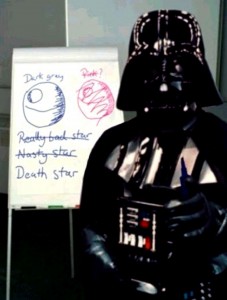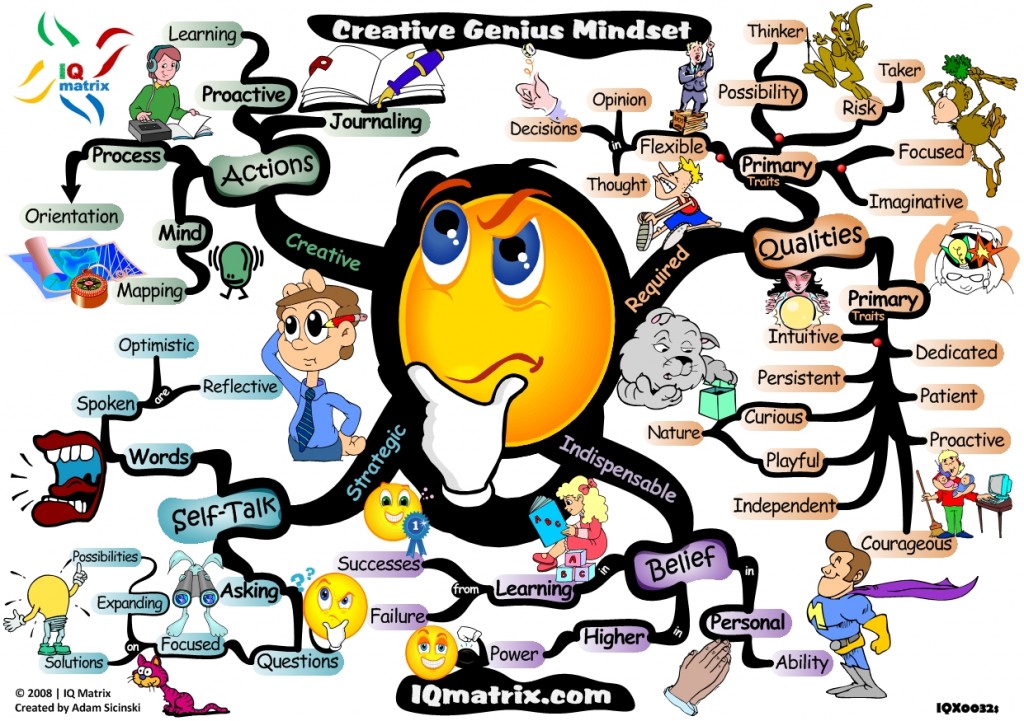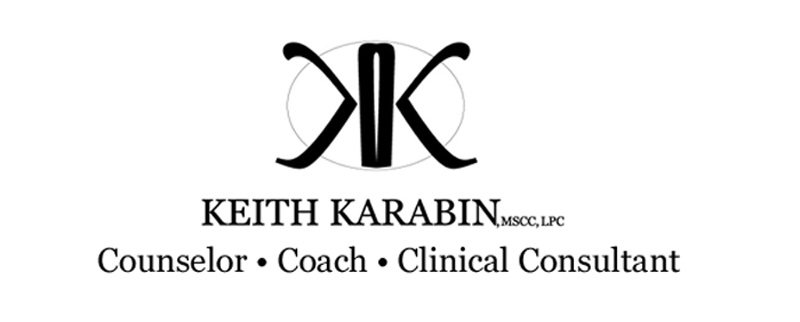How to Have Creative Intercourse
How to begin creatively? Hm. The direct question approach? “Are you creative?” Nah. Too infomercial. The smug, know-it-all way? “The only creative thing about creativity is the definition by those who don’t have it of those who do.” Blech. Creative beginning, creative beginning…
Creativity is like masturbation. Everyone does it, few harness it, and fewer still make a living at it. Creativity Psychology is the admirable field of study which attempts to catch and quantify this universal cognitive quicksilver in an effort to understand and increase it. This difficult task is akin to Edison and Franklin’s attempts to master electricity. Creativity is raw potential at this stage in human development, untamed and wild, therefore much of its power goes unused. Creativity is the lightning strike; creativity psychology seeks to build the turbine.
Dr. Robert Epstein, Professor and Creativity Researcher wrote in 1996, when he was editor of Psychology Today, that “an explosion of creative forces is at hand, and it could make the accomplishments of the Renaissance look like a ride on a stationary bicycle.” Think for a moment about the creative accomplishments of the last 14 years. What springs to mind? Tiny cell phones and ipods? Vacuum cleaning robots? An avalanche of wonderful books and movies? Did we live through a creative Renaissance, or has it not yet happened? Most importantly, are you a part of it, right now?
Creativity in Crisis
 While studies differ, a general consensus offers that only 10% of people asked would say that they are creative. I asked five people whom I am certain are creative to be interviewed for this piece. Two didn’t respond and two out of the three who did said that they didn’t feel they were very creative. Published writers and bloggers all.
While studies differ, a general consensus offers that only 10% of people asked would say that they are creative. I asked five people whom I am certain are creative to be interviewed for this piece. Two didn’t respond and two out of the three who did said that they didn’t feel they were very creative. Published writers and bloggers all.
As in my lead analogy, I firmly believe that everyone is creative. But our culture seems to glamorize the distinct creativity of the few, while de-emphasizing the everyday creativity of the many. Teresa Amabile, Brandeis University Psychologist, believes that “We’ve become narrow in the way we think about creativity. We tend to think of it as rarefied: artists, musicians, poets. But the cook in her kitchen is showing creativity when she invents a variation on a recipe.”
Today we seek one thing; the overlooked element of creativity in our lives. I have asked some writers to comment on that aspect of creativity in the hopes that we will be able to better observe, through their example, our own creativity.
Julie Summerell is a fiction writer and blogger who has spent the last four years maintaining Are You Gonna Eat That? a living collection of personal essays of which Summerell says her job is “to make…interesting or funny.” Martin C. Henley is a writer and blogger at The Seven Keys of Ventoozlar, who considers his most adept style as “almost certainly being funny on paper.” He has been writing “since about second grade, which was just realizing that I could chronicle the things I was already pretending.” Rick A. Carroll also started writing stories as a child. He primarily writes fantasy and science fiction and would best describe his writing as “a combination of profanity and absurdity that somehow congeals to form something far smarter than I intended it to be.” This is specifically true on Carroll’s blog, Wordasylum.
Our three writers shared something at birth besides an eventual passion for the written word. According to Amabile, the potential for creativity is universal. “The kernel of creativity is there in the infant…As they grow older, children begin to create entire universes of reality in their play.” Summerell and Carroll stated that their creativity was often encouraged. Henley’s parents never denied his creativity, but did “appeal to me to compartmentalize my creativity to a prescribed time. My mom never minded that I drew or wrote, she was just tired of it being on the back of my tests DURING the tests. It never worked, but she tried.”
A kindergarten teacher interviewed by Dr. Epstein would agree that their creativity was harnessed at the age “before the kids get ruined.” He went on to assert that early in the school years “kids have to work all the time. There’s no more time for fun, because there’s so much they’ve got to learn. They’re not even allowed to daydream any more.” Perhaps it is this work-focused attitude of early education which stifles universal creativity as a socialization necessity in children.
Joy and Pain Birth the Same Freedom
 At the initial stage of the process, creativity is fun. “Humor greases the wheels of creativity,” according to Daniel Goleman, author and New York Times Brain Science Journalist. Everyone agrees that creativity, after the idea, will become work. But creativity will bring fun to the work, as much as possible. All three writers have tackled gritty, true life topics on their blogs. All have also tried to add an element of wit to the discussion because not only is entertaining their readership important to them but, according to Goleman, “creativity flourishes when things are done for enjoyment.”
At the initial stage of the process, creativity is fun. “Humor greases the wheels of creativity,” according to Daniel Goleman, author and New York Times Brain Science Journalist. Everyone agrees that creativity, after the idea, will become work. But creativity will bring fun to the work, as much as possible. All three writers have tackled gritty, true life topics on their blogs. All have also tried to add an element of wit to the discussion because not only is entertaining their readership important to them but, according to Goleman, “creativity flourishes when things are done for enjoyment.”
Another creativity myth is that one needs a space to be creative, a Zen Garden of the mind. Neither Carroll’s “table in the living room of my apartment…covered in kid’s drawings, mail, movies, and the like,” or Summerell’s “kitchen table or…bed” are Zen Gardens. Not that they aren’t cozy or brimming with life. Henley’s is much the same. “I need a certain amount of activity around, I guess. As I did so much of my formative writing in crowded coffee shops and sitting with a notebook in the corner of a busy space, that still carries over to my process today. I find when I finally do shut out all distraction, I grind my gears looking for distraction.” Carroll agrees that though he might “dream of the day we can buy a house and I’ll have a real office…I don’t know what I’d do with the solitude.” Creativity is free to happen anywhere, anytime.
Creativity thrives in the commonplace crisis of daily life. “Creativity requires a challenge to start a flow of new ideas,” says Dr. Epstein. We all have those. While Carroll’s process involves outlines and “mindmaps” and Henley and Summerell are more free form, all begin with the idea. Sometimes the idea comes from the news, an interaction with friends, or a divergent take on another creative idea, which is a creative phenomenon that Dr. Epstein calls “Broadening.” Often it comes from meeting a challenge or tackling emotional stimuli. In that endeavor creativity can bring emotional freedom as well as a solution. Carroll considers a post in which he came to grips with an old friend’s death from Leukemia “one of the most important pieces of writing I’ve ever done.” Every challenge of life is fair game for Summerell. Henley often works well with “stress and turmoil in general…the more something is under my skin, the more I need to put that somewhere. Preferably in your head with my word-fist.”
Creativity Wears Combat Boots
The root of creativity is not a big fluffy ribbon of ephemera. It’s the word creation. Creation is concrete, simple, often messy, and always has something to show for it. For our three writers, that product is the written word. For you it may be your family’s dinner. The way you wired the entertainment center. The new way you chose to broach a problem with that over-sensitive coworker. The ramshackle contraption which you jammed into the toilet tank, broken window handle, or vacuum cleaner which makes it function almost as good as new. Creativity is what brings us from problem or idea, to result. We all do that. The one difference between people’s creativity and Creative People is that people who perform consistent acts of creation begin to get very practiced at the process.
It may happen in a flash. “When creativity is in full fire,” according to Dr. Epstein, “People can experience a flow, or a ‘white moment.’ Everything clicks. Your skills are so perfectly suited to the challenge that you seem to blend with it. Everything feels harmonious, unified, and effortless.” It is what Carroll believes happened to him while writing the piece on his departed friend. Henley believes that those moments when “words and ideas congeal and find their way out and as often as not an hour later you’re surprised any of that came from you at all,” defy description; they simply happen. The ferocity at which Summerell’s “…fingers fly, and everything around me disappears” has her husband “waiting for me to break my keyboard.”
Do you desire that “white moment?” Do you feel it might have happened to you, or almost happened? You have one choice. Act on your desire. Create, even if you once were told that you lack creativity. I guarantee it was simply overlooked. “The more you can experience your own originality, the more confidence you get, the greater the probability that you’ll be creative in the future,” says Goleman. “The idea is to develop the habit of paying attention to your own creativity. Eventually, you will come to place greater trust in it and instinctively turn to it when you are confronted with problems.”
Carroll echoes Dr. Epstein’s fourteen year old wonder at a creative Renaissance. “It staggers my mind to think about how many Hemmingway’s or Lennon’s are stuck in a 9-5 grind, never realizing what they could create.” I’m staggered as well. We all have a creativity lightning bolt within us, yet I think the person who gets the most pleasant shock out of it is ourselves. I assert that the shock should be somehow shared.
Each of our three writers have said that their ongoing blogs have been influenced by the audience, or expected audience, which they garner. They each find pleasure in the experience, even as they influence and entertain that audience. It is a mutually beneficial symbiosis. It is creative intercourse. Creativity seeks to be fun, to be freeing, to be functional and also to build fellowship between the creator and the people who are benefited by its function. That is the true hardship of not living out your creativity. In the context of my original analogy, creativity alone may be fun, but creative intercourse will keep humanity living and thriving.
K

__________________________________________
PS: I want to give a huge thank-you to Julie Summerell, Martin C. Henley and Rick Carroll. I offered them nothing to put up with my questions (for I have nothing to offer) and they did so with grace and enthusiasm. Go check out their blogs. You will be entertained and enlightened. But, do keep an eye out for Henley’s word-fist.

